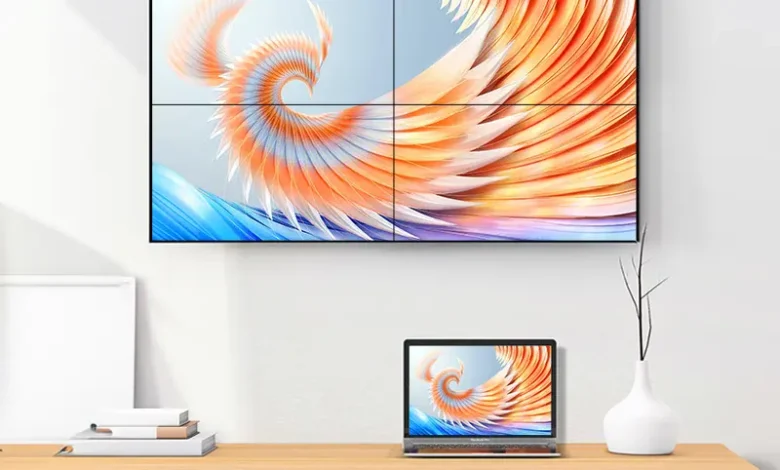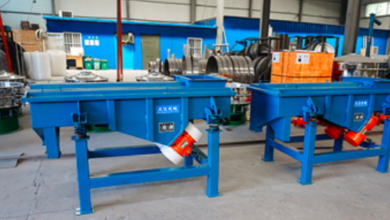The Rise of Interactive Flat Panels: Transforming Modern Education and Business Environments

In the digital age, the way we communicate, learn, and collaborate has undergone a significant transformation. At the forefront of this revolution are interactive flat panels (IFPs), sophisticated tools that combine the functionalities of traditional whiteboards, projectors, and computers into a single, versatile device. This article will provide a comprehensive exploration of interactive flat panels, examining their features, advantages, applications, and future trends, as well as their impact on various sectors.
Defining Interactive Flat Panels
Interactive flat panel are large, touch-sensitive screens that allow users to interact with digital content through touch or stylus input. These panels come equipped with high-resolution displays, multi-touch capabilities, and a suite of integrated software, making them ideal for various interactive activities. Unlike traditional teaching and presentation tools, IFPs offer a seamless and integrated experience, enhancing engagement and collaboration.
Core Features of Interactive Flat Panels
Interactive flat panels are distinguished by several key features that contribute to their effectiveness and versatility:
Ultra-High Definition Displays: Most IFPs feature 4K UHD displays, delivering sharp, vibrant images that enhance the visual experience.
Multi-Touch Input: These panels support multi-touch input, enabling multiple users to interact with the screen simultaneously. This feature is crucial for collaborative tasks and interactive learning.
Integrated Software Solutions: IFPs come with a range of built-in software applications designed for education, business, and creative uses. These applications include digital whiteboarding tools, presentation software, and multimedia playback capabilities.
Connectivity Options: Interactive flat panels offer extensive connectivity options, such as HDMI, USB, Bluetooth, and Wi-Fi, facilitating easy integration with other devices like laptops, tablets, and smartphones.
Interactive Tools: Many IFPs are equipped with interactive tools like styluses and digital pens, allowing users to write, draw, and annotate directly on the screen. These tools enhance the interactive experience and make content creation more intuitive.
Advantages of Using Interactive Flat Panels
The implementation of interactive flat panels in various environments brings numerous benefits, transforming traditional methods of communication and collaboration.
Enhanced User Engagement: The interactive nature of IFPs captures user attention, making learning and presentations more engaging and enjoyable. Active participation is encouraged, leading to better information retention.
Facilitated Collaboration: IFPs support simultaneous multi-user interaction, which is invaluable for collaborative projects and discussions. Teams can brainstorm, share ideas, and make decisions more effectively.
Versatility in Use: Interactive flat panels are adaptable tools that can be used in diverse settings, from classrooms and conference rooms to healthcare facilities and creative studios.
Improved Accessibility: The intuitive touch interface and user-friendly software of IFPs make information accessible to a broader audience, including individuals with varying levels of technical expertise.
Cost Efficiency: Although the initial investment in IFPs can be high, they offer long-term cost savings by reducing the need for multiple devices and cutting down on paper usage.
Applications of Interactive Flat Panels
Interactive flat panels are versatile tools with applications across various sectors, each benefiting from their unique capabilities.
Educational Settings
In education, interactive flat panels are redefining classroom dynamics. Teachers use these panels to create interactive lessons that integrate multimedia content, digital assessments, and collaborative activities. Students benefit from a more engaging learning environment where they can interact directly with educational material, participate in group projects, and receive immediate feedback. The ability to save and share digital notes also enhances the learning process, allowing students to review lessons at their convenience.
Corporate Environments
In the corporate world, interactive flat panels are transforming meetings, presentations, and training sessions. These panels enable real-time collaboration, allowing team members to share ideas, annotate documents, and make decisions efficiently. Video conferencing capabilities further enhance communication, making it easier for remote teams to collaborate. The versatility of IFPs also makes them ideal for brainstorming sessions, project planning, and client presentations.
Healthcare Sector
Interactive flat panels are increasingly being used in healthcare settings for patient education, consultations, and collaborative treatment planning. Medical professionals can display high-resolution medical images, annotate them directly on the screen, and share them with colleagues or patients. This interactive approach improves patient understanding and engagement, leading to better health outcomes.
Creative Industries
In creative fields such as design, advertising, and media production, interactive flat panels provide a powerful platform for ideation and collaboration. Designers can sketch concepts, manipulate digital content, and present their ideas interactively. The ability to visualize and modify designs in real-time fosters creativity and innovation, making IFPs invaluable tools in the creative process.
Future Trends in Interactive Flat Panels
As technology continues to advance, interactive flat panels are poised to become even more sophisticated and versatile. Several emerging trends are set to shape the future of IFPs:
Integration with Artificial Intelligence: The incorporation of artificial intelligence (AI) into interactive flat panels will enhance their functionality. AI-powered features such as voice recognition, predictive text, and personalized user experiences will make these panels more intuitive and efficient.
Augmented Reality (AR) and Virtual Reality (VR): The integration of AR and VR technologies into IFPs will create immersive learning and collaboration experiences. Users will be able to interact with 3D models, explore virtual environments, and engage in simulations, making education and professional training more engaging.
Enhanced Connectivity: Future IFPs will offer improved connectivity options, enabling seamless integration with a wider range of devices and platforms. Enhanced connectivity will facilitate better data sharing, real-time collaboration, and remote access.
Sustainability Initiatives: As the demand for sustainable technologies grows, manufacturers will focus on developing eco-friendly interactive flat panels. Energy-efficient designs and longer product lifespans will reduce the environmental impact and contribute to a more sustainable future.
Challenges and Considerations
While interactive flat panels offer numerous advantages, there are several challenges and considerations to keep in mind when adopting these devices:
Initial Cost: The upfront cost of purchasing interactive flat panels can be a barrier, particularly for schools and small businesses with limited budgets. However, the long-term benefits and cost savings can justify the initial investment.
User Training and Support: To maximize the potential of IFPs, users need adequate training and ongoing support. Educators, business professionals, and other users must be proficient in using the features and functionalities of these devices.
Technical Issues: Like any technology, interactive flat panels can encounter technical issues such as connectivity problems, software glitches, and hardware malfunctions. Reliable technical support and maintenance plans are essential to address these issues promptly.
Compatibility and Integration: Integrating IFPs with existing systems and workflows can be challenging. Ensuring compatibility with other devices and software is crucial for a seamless and efficient experience.
Conclusion
Interactive flat panels are revolutionizing the way we interact with digital content, offering a more engaging, collaborative, and versatile experience. Their applications in education, business, healthcare, and creative industries highlight their transformative potential. As technology continues to advance, the future of interactive flat panels looks promising, with AI integration, AR/VR capabilities, and enhanced connectivity set to further revolutionize the way we learn, work, and communicate. Despite the challenges, the benefits of adopting interactive flat panels far outweigh the drawbacks, making them a valuable investment for anyone looking to enhance their interactive experiences.





